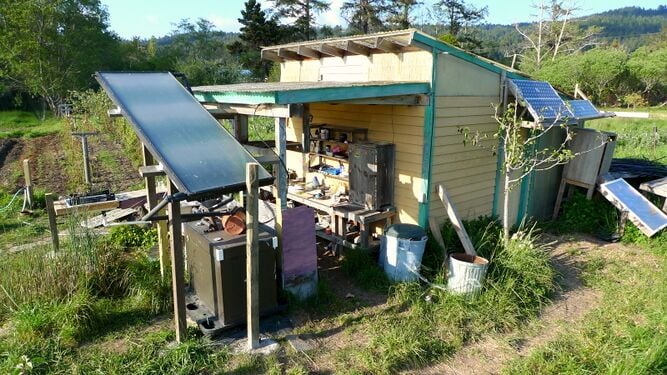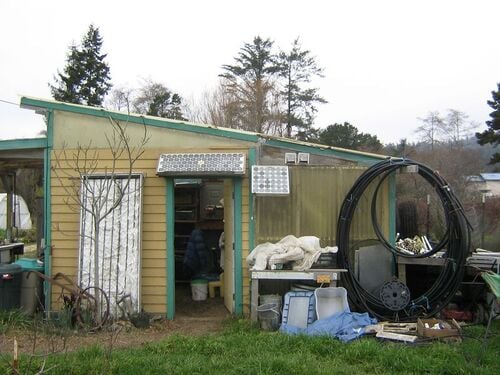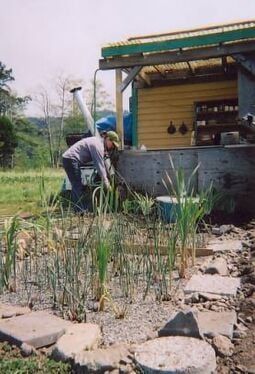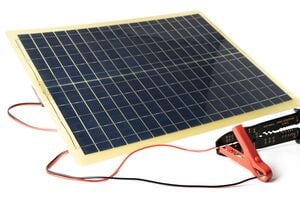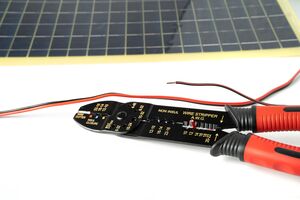
This paragraph will appear in search results and previews for this page. Write a brief introductory text with information such as a description of your project, when was it designed and built, your motivation to solve the problem, the intended users. This will explain your project to someone who has never heard of it before.
Background[edit | edit source]
In a previous Engineering 305 class here at Humboldt, a team built a station to store and share materials with the community at CCAT. This shed has an exposed hempcrete wall that requires a natural finish to protect it from weathering. Hempcrete was an innovative way to produce building materials that were chemical-free and abundant in Humboldt. This new technique was even in the newspapers. Our team Aubrey, Jillian, Erik, and Jazz is composed of three studying mechanical engineering and one studying environmental engineering. We have various backgrounds in home and school projects in building with materials. Our client CCAT, Campus Center for Appropriate Technology focuses on sustainable living and education. This organization is student-led and funded providing resources, workshops, and classes to the Humboldt community. CCAT’s mission is “CCAT strives to demonstrate that living lightly on the Earth is both practical and rewarding.”
Problem statement[edit | edit source]
The objective of this project is to find an effective sealant for the hempcrete wall, that will need to be made of appropriate technology. This wall will also contain a peek-a-boo window feature showcasing hempcrete. Additionally, providing educational signage on process of creation and beautification. We plan on covering and sealing the hempcrete wall with lime plaster to protect it from wear and tear. The goal of this lime plaster is to preserve the hempcrete wall for a long time, allowing CCAT to store materials in the hempcrete station for student use.
Criteria[edit | edit source]
Include a brief intro to the criteria and then include a table with constraints and weights (0-10 highest).
| Criteria | Description | Weight (1-10) |
|---|---|---|
| Thoroughness of content | Who, what, when, were, etc. | 10 |
| Considers audience | This will be read by people outside the US and in the future, so be sure to add enough context. Consider that most people might not even know where Arcata is. | 9 |
| Formatting | Should look good, sortable table for criteria | 5 |
| Extra content | Makes documentation informative (e.g. images, video) | 5 |
Prototyping[edit | edit source]
Show examples of the prototyping process including what you learned. A great way to communicate your design your process (and to earn extra points!) is to show your early drawings (by hand and digital), failed attempts and photos of tools, materials and your team (or your hands) as you build this prototype.
- Sample gallery
-
Sample caption text.
-
More sample caption text. This would look better with different images.:)
-
Even more sample caption text.
Final product[edit | edit source]
Final product that was decided on includes plasters in a 1.5:2.5 ratio of hydrated lime to sand as well as hemp hurds in the base layer. The hemp hurds in the base layer were found to strengthen the plaster, which was beneficial for the layer right up against the wall. The second layer of plaster is in a 2.5:1.5 ratio of sand to hydrated lime which was found to be the best balance between the strongest and most water resistant of the tested plasters. The final layer of plaster is a 2.5:1.5 ratio of sand to hydrated lime with pigments added until the desired color is reached. The design also features a truth window exposing the layers of hempcrete and the wooden two-by-fours holding the wall together. Finally, the wall includes a sign explaining the uses and building process of the reclamation station and hempcrete wall.
Construction[edit | edit source]
A very complete description of how the final project is built. This large section should have lots of pictures. Use the Help:Images#Galleries and probably Template:Steps (e.g. Barrel O' Fun Worm Bin Instructions).
- Sample gallery
-
Sample caption text.
-
More sample caption text. This would look better with different images.:)
-
Even more sample caption text.
Video instructions[edit | edit source]
A good way to display a process is by making a video explaining your process. See Template:Video for information on how to add and annotate videos.
Bill of materials[edit | edit source]
Description of costs, donations, the fact that this is just proposed, etc. For a simple cost table, see Help:Table examples#Cost Table and Template:Bill of materials for two nice formats.
| Item | Amount | Cost per unit | Total |
|---|---|---|---|
| Things — Get at the thing store | 3 | USD 5.75 | USD 17.25 |
| Another thing — 3' x 2', yellow | 1 | USD 150.00 | USD 150.00 |
| Grand total | USD 167.25EUR 143.84 <br />GBP 122.09 <br />CAD 207.39 <br />MXN 3,487.16 <br />INR 12,518.66 <br /> | ||
Operation[edit | edit source]
This is how to operate. It should have a brief introduction. You might want to show images or videos with step-by-step instructions when needed.
Maintenance[edit | edit source]
Introduce this maintenance section. Help ask the questions:
- Are there any needed actions for maintenance?
- How often?
- Who should perform maintenance?
Maintenance schedule[edit | edit source]
This is when to maintain what. Please keep the format the same as it populates the kiosk in CCAT.
- Daily
- A daily task
- A daily task
- Weekly
- a weekly task
- a weekly task
- Monthly
- a monthly task
- a monthly task
- Yearly
- a yearly task
- a yearly task
- Every __ years
- task
- task
Conclusion[edit | edit source]
Testing results[edit | edit source]
Describe the testing results.
Discussion[edit | edit source]
Discuss the testing results.
Lessons learned[edit | edit source]
Discuss lessons were learned during this project and what you would do different next time.
Next steps[edit | edit source]
Discuss any next steps for the project as it goes on into the future.
Troubleshooting[edit | edit source]
This is only how to troubleshoot basic operation. For complex issues, the solution might just say something like contact ________. It should be a table in this format:
| Problem | Suggestion |
|---|---|
| Example issue | Example solution or suggestion |
| Does not turn on | Make sure it is plugged in |
| Another issue | Etc. |
Team[edit | edit source]
Introduce team and semester in the following format:
- Lonny Grafman
- Emilio Velis
- Jazz Quincy
- One bullet for each team member.
References[edit | edit source]
